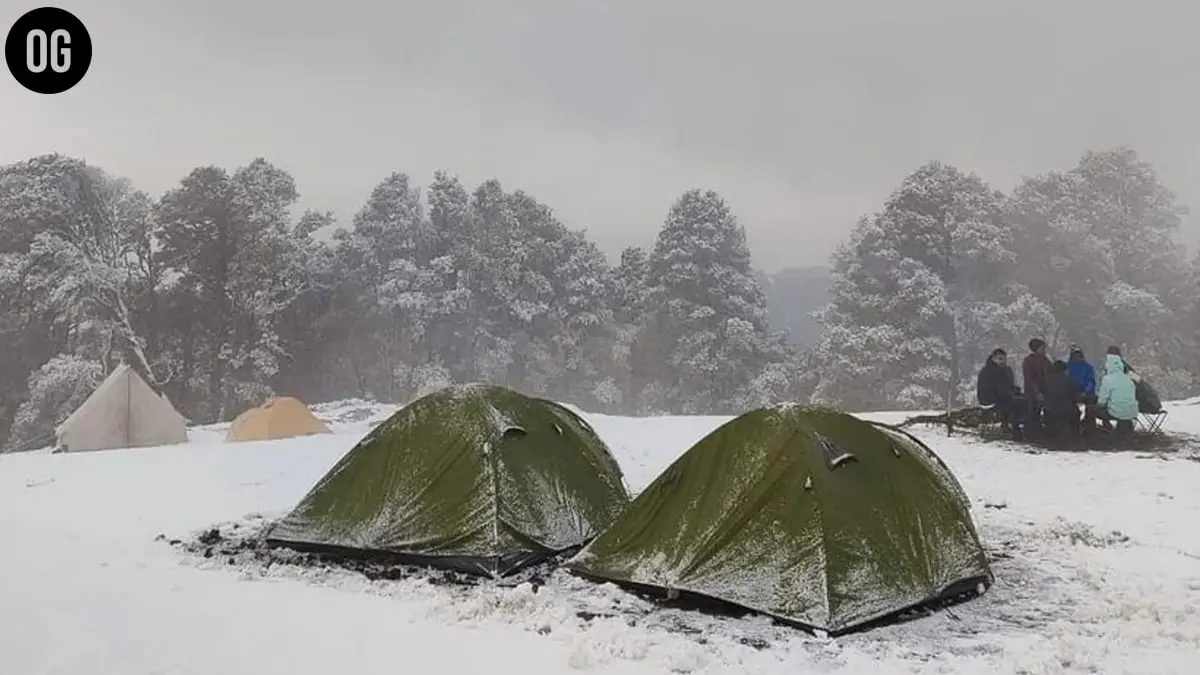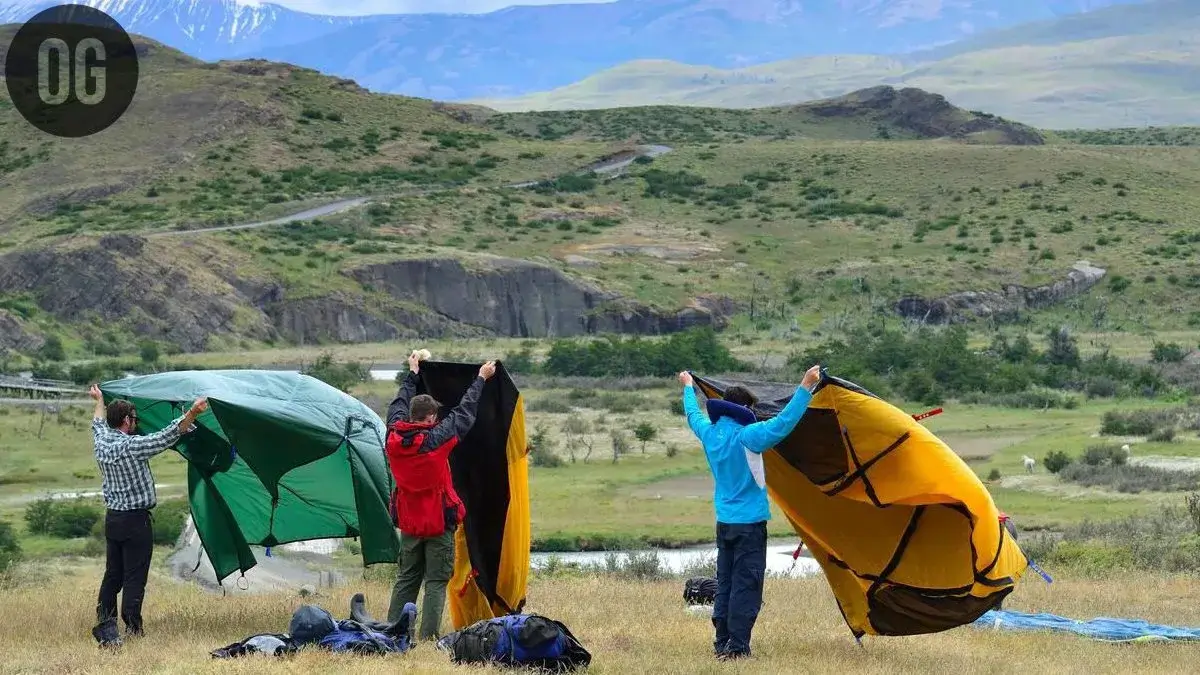Exploring the Importance of a Tent Footprint: 6-Step Comprehensive Guide
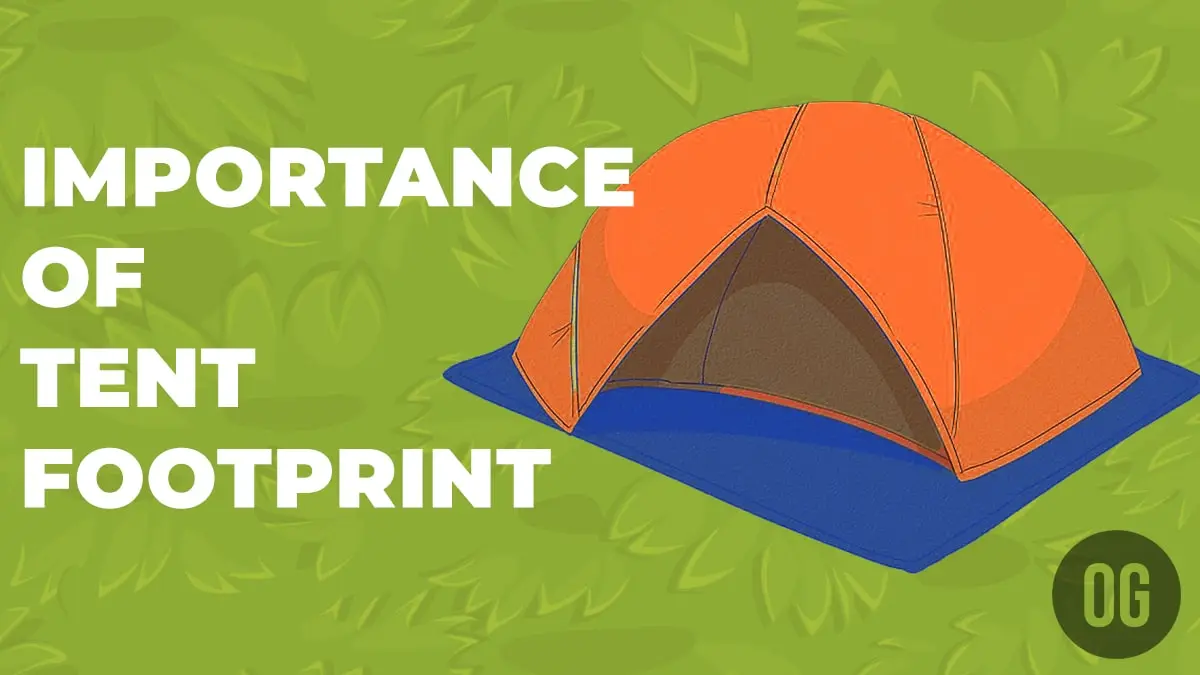
Exploring the Importance of a Tent Footprint in Camping. It is an age-old outdoor pursuit, that attracts many outdoor enthusiasts to its beauty.
Table of Contents
Tent footprints are groundsheets designed to protect the tent floor from abrasion, moisture intrusion, and other forms of potential ground damage. Their primary function is to shield it from abrasion while also providing insulation and moisture management during your camping experience.
Related: 7 Best Tents For Camping And Backpacking

Geertop Footprint
The Geertop Ultralight Waterproof Tent Tarp Footprint is an essential outdoor essential. Crafted with 20D Nylon Cloth for superior durability and shielding against punctures and abrasions, its 20D Nylon construction guarantees resilience against punctures and abrasions – perfect for protecting against punctures or puncture wounds – as well as impressive water resistance (PU8000MM), portability and easy setup via metal grommet eyelets; available in multiple sizes (such as 4’3”x 6’11”/130×210 cm (weight:190g).
Yet beneath its sublime landscapes lies the harsh reality of wear and tear on your precious tent – enter an unsung hero of camping gear: tent footprint. In this guide, we explore the Importance of a Tent Footprint.
What is a Tent Footprint?
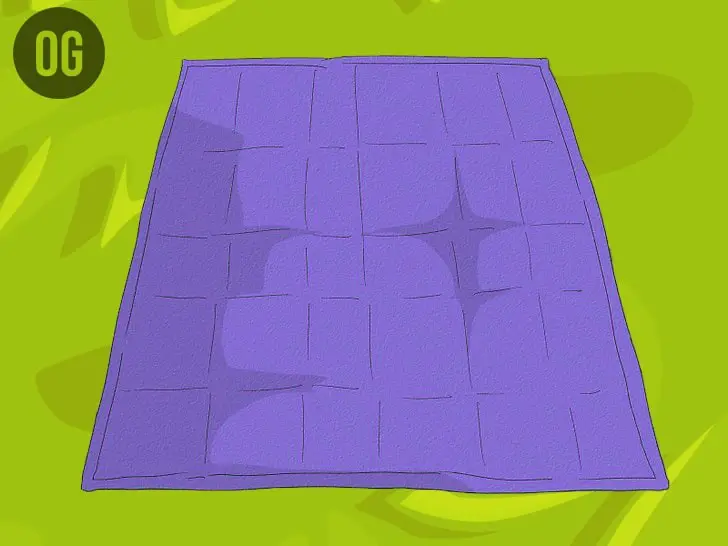
When starting to explore the importance of a tent footprint it is important to know what is a tent footprint.
Tent footprints are essential camping accessories designed to shield the floor of your best camping tent from wear and tear, moisture intrusion, and other forms of potential damage caused by the ground.
Here we’ll explore their purpose, differences between groundsheets/tarps and footprints as well as materials typically found in tent footprints.
Definition and Purpose:
A tent footprint is a specially crafted sheet or tarp placed on the ground before setting up a tent, primarily used to provide additional protection between its floor and the earth below, thus helping ensure the longevity and functionality of your shelter.
How it Differs From Ground Tarps:
Both tent footprints and ground tarps serve as ground coverings; however, they differ in both purpose and design.
Tent footprints are specially tailored to match the dimensions of specific tents to ensure a perfect fit, featuring attachment points or grommets that align with corners or stakes of tents so water pools on either side rather than between the footprint and tent floor. Ground tarps on the other hand may not match your tent as precisely.
Common Materials Used for Tent Footprints:
Tent footprints should be constructed from durable and weather-resistant materials to withstand outdoor conditions, including:
Polyethylene (PE): PE material is often utilized for tent footprints due to its lightweight yet waterproof qualities, providing superior protection from moisture and abrasion.
Nylon: Nylon footprints are known for their durability and resistance to tears, with many coated or treated to increase waterproofing capabilities.
Polyester: Polyester footprints have great UV damage resistance and may therefore make suitable choices for longer-term usage.
Silnylon: Made of silicone-coated nylon, silnylon footprints offer exceptional waterproofing and durability while remaining lightweight.
Cuben Fiber (Dyneema): Cuben fiber footprints are lightweight, waterproof, and resistant to abrasion, making them popular among ultralight backpackers.
Tent Footprint Benefits
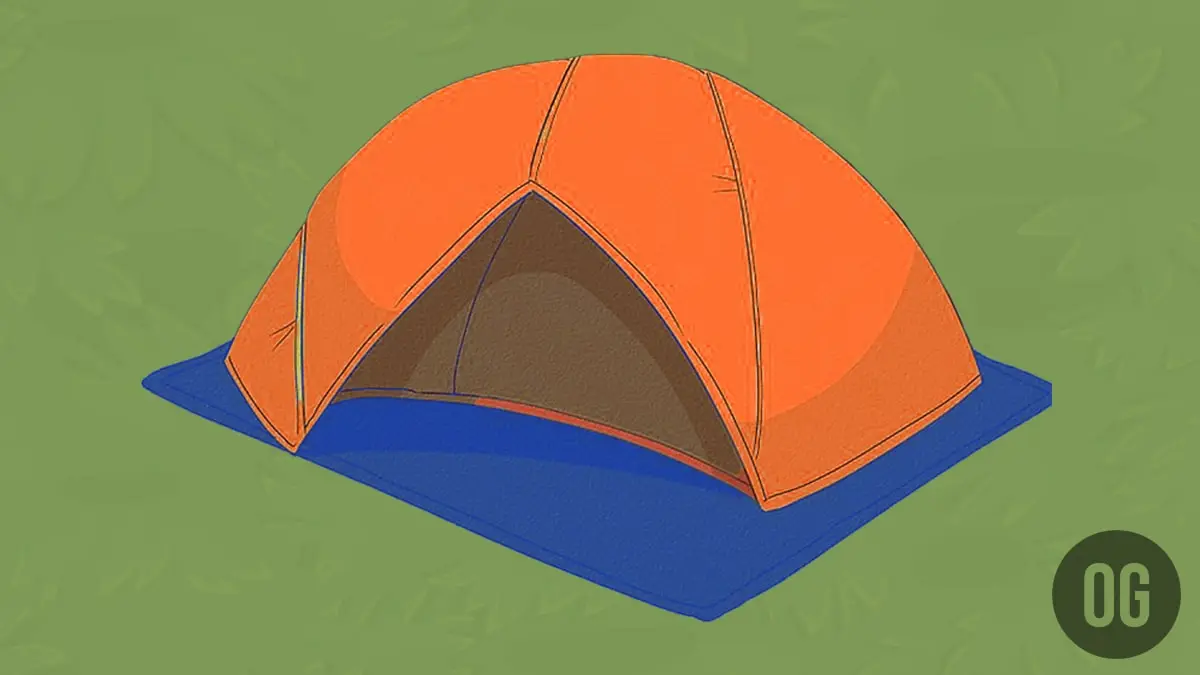
Camping enthusiasts recognize the value of having an adequate tent, sleeping bag, and other essential gear when venturing outdoors; yet one often overlooked the importance of a tent footprint.
This durable groundsheet designed to fit underneath your tent offers several benefits that can enhance your camping experience and extend its lifespan. Here are three advantages of using one:
Protect Your Tent:
The actual importance of a tent footprint is protecting the bottom of your tent from the elements.
Acting as an effective barrier between it and the ground, this protection prevents rocks, sticks, or uneven terrain from puncturing or damaging it – especially useful in rough camping locations where conditions can be unforgiving.
Moisture Control:
Tent footprints are usually constructed of waterproof or water-resistant materials like polyethylene, nylon, or polyester to form an impenetrable waterproof barrier, helping keep rainwater and damp conditions at bay and keeping both you and your gear dry.
Camping in the rain or winter is not so easy so we recommend you follow these tips before rain camping and winter camping.
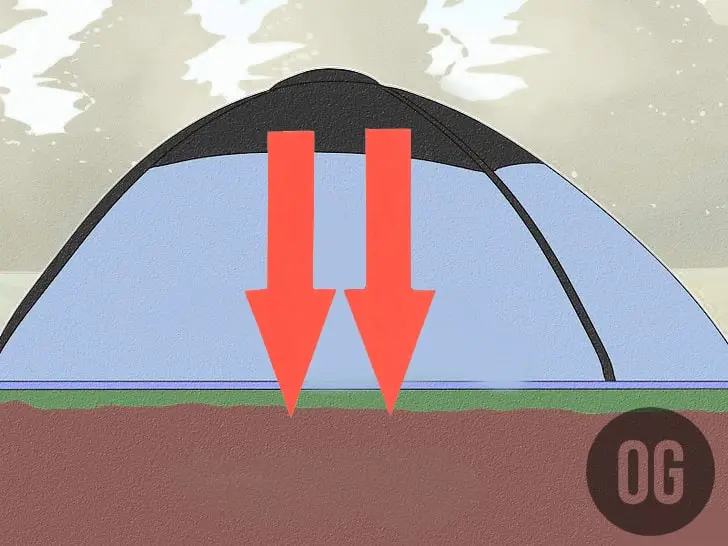
Extended Tent Lifespan: By having a footprint beneath your tent you create a waterproof barrier that keeps any seeping through from entering through its floor, which prevents any potential moisture seepage and helps extend its life span significantly and that is the importance of a tent footprint.
Footprints can significantly extend the lifespan of your tent’s floor by protecting against wear and tear caused by rough terrain.
Improved Comfort:
Tent footprints provide insulation between your tent and the ground, helping regulate temperatures inside.
This insulation keeps you warmer in cooler conditions while cooling you off in hotter ones for increased camping comfort.
Easy Campsite Selection:
Utilizing a footprint allows you greater freedom when selecting your campsite. With it, you can set up your tent on irregular or rocky surfaces knowing that its smooth surface protects below for more comfortable sleep and campsite selection options.
Easy Cleanup:
Tent footprints are easy to keep clean. After returning from camping, simply wipe them down, shake off any dust or dirt, fold them up for storage, and they’re done – faster and less hassle.
Weight and Packability:
Many tent footprints are designed to be lightweight and packable, making them suitable for backpacking and minimalist camping.
Their lightweight material adds minimal weight to your gear while their compact size facilitates transport.
Types of Tent Footprints
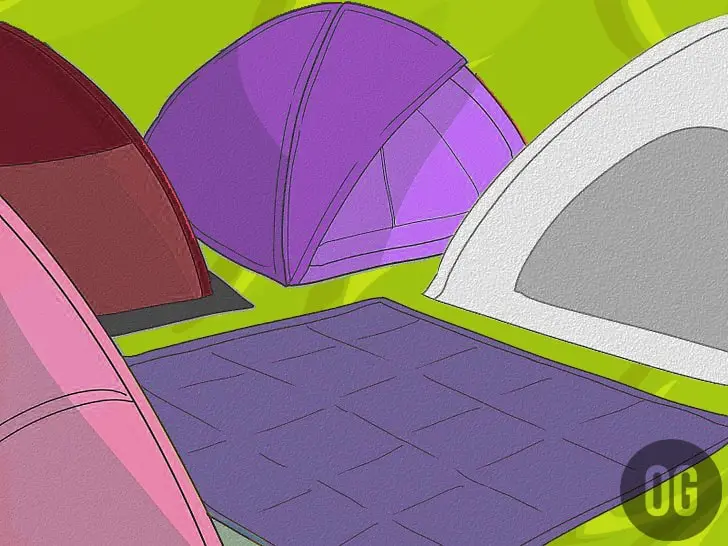
Tent footprints are essential camping accessories that serve to protect the floor of your camping tent and improve your camping experience.
There are various kinds of tent footprints, each designed for different camping situations or preferences.
Becoming familiar with them will enable you to make a well-informed selection that matches up with your camping style – here are the most commonly found types:
Custom-Fit Footprints: Custom-fit footprints are specifically tailored to match the dimensions and shape of a particular tent model, creating a precise match covering its exact footprint.
Custom-fit footprints often come equipped with attachment points or grommets that align with tent corners and stakes for secure attachment ensuring precise coverage of every corner of your tent floor.
Custom-fit footprints make camping convenient while protecting investments by providing an ideally fitting groundsheet – the ultimate goal is ensuring optimal use.
Universal Footprints:
Universal footprints provide more versatility and can be used with multiple tent models.
They usually come in standard rectangular or square shapes to accommodate various tent sizes.
While universal footprints provide campers who own multiple tents or frequently switch models some flexibility, some adjustments or trimming may be required before it fits under their tent perfectly.
DIY Options: DIY tent footprints offer cost savings while providing customization or durability similar to commercially available options, making DIY footprints an appealing solution for campers on a tight budget or with resourcefulness in mind.
By crafting their footprint out of materials like heavy-duty tarps, plastic sheeting, or even old tent floors you can craft yourself an inexpensive footprint for camping use.
Ultralight Footprints: Ultralight tent footprints are created with weight-conscious backpackers in mind, made of light materials like silnylon or Cuben Fiber (Dyneema) to reduce pack weight and minimize pack size.
While ultralight footprints may sacrifice some durability over heavier options, ultralight options make an excellent choice for lightweight travel that prioritizes smooth terrain over rugged terrain.
Specialty Footprints for Specific Conditions: Under certain camping circumstances, specialized footprints may prove invaluable.
Winter Footprints: Provide extra insulation against snowfall and cold temperatures – protecting tents from any further snow accumulation or freeze-ups.
Desert Footprints: Crafted for use in harsh desert conditions, desert footprints provide added durability to protect against the harsh abrasiveness of desert sands and terrain.
High-Alpine Footprints: These footprints were designed specifically to withstand high-altitude camping, providing insulation from extreme weather conditions as well as insulation against temperature extremes.
Choosing the Right Tent Footprint: A Comprehensive Guide
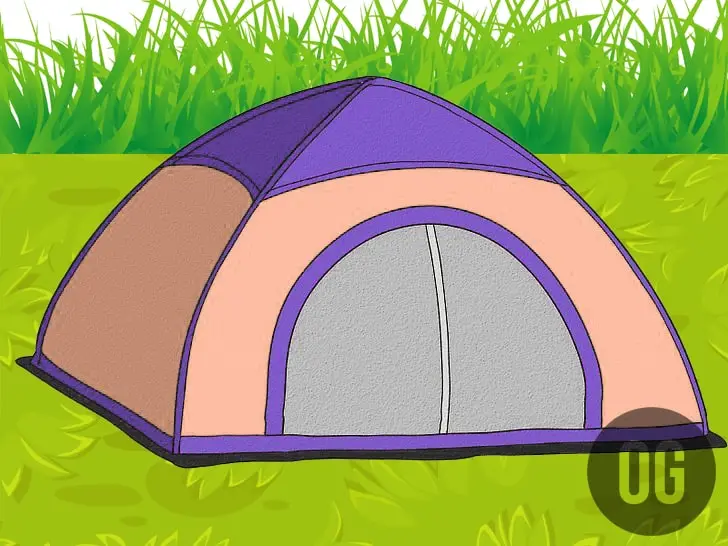
Choosing an appropriate tent footprint is a crucial decision for any camper or outdoor enthusiast, as this often-overlooked accessory can greatly impact both your camping experience and your tent’s lifespan.
When making this important choice, take into consideration several key points when making an informed choice:
Tent Compatibility: Match the footprint to your tent model whenever possible. Many manufacturers provide custom-fit footprints designed specifically for their tent models to provide optimal coverage and secure attachment points to attach the footprint securely.
Size and Shape: Assure the footprint fits perfectly with the dimensions and shape of your tent floor.
If a custom option isn’t available, opt for a universal footprint that closely reflects its dimensions; having one that’s slightly larger usually provides greater coverage and protection.
Materials and Durability: While exploring the importance of a tent footprint it is crucial to consider the durability of the footprint material you select. Popular choices are polyethylene (PE), nylon, polyester, silnylon, and Cuben Fiber (Dyneema).
PE footprints tend to be heavier but more durable while silnylon and Dyneema options tend to be lighter; choose one which suits your camping conditions and preferences accordingly.
Weight: If you’re backpacking or seeking to reduce weight, opt for an ultralight footprint made of lightweight materials.
These footprints are specifically designed to be lightweight and compact – ideal for long-distance treks.
Weather Conditions: In exploring the importance of a tent footprint also you have to consider the climate and weather conditions you will face on your camping trips.
In wet environments such as rainy ones, prioritize a waterproof footprint to prevent moisture seepage.
For harsh conditions like snowfall or extreme cold, choose something with increased insulation and durability.
Terrain and Ground: Consider what type of terrain you will be camping on when selecting your tent footprint.
A sturdy footprint can protect the floor of your tent from being damaged in rocky or abrasive areas while sandy soil requires special precautions to prevent dust or sand from entering through its seams and into your tent.
Budget: Your budget is an essential consideration in selecting a tent footprint. Custom-fitted models tend to be more costly while universal or DIY options may be more budget-friendly.
Take care in considering what fits best with your camping needs while protecting your investment in tent gear.
Attachment Mechanism: Investigate how your footprint attaches to your tent. Some models feature grommets, snaps, or clips that align with the corners and stakes for a secure fit; other styles may rely on simple placement beneath the tent for stability. Pick an attachment method that meets both your preferences and provides stability.
Ease of Maintenance: Consider how easily and regularly the footprint needs to be cleaned and maintained.
Some materials can be easily wiped clean while others require more in-depth upkeep and care.
Considerations of Environmental Aspects: Ecologique-minded campers should look for footprints made from eco-friendly materials or reuse a ground cloth or tarp they already have to reduce waste.
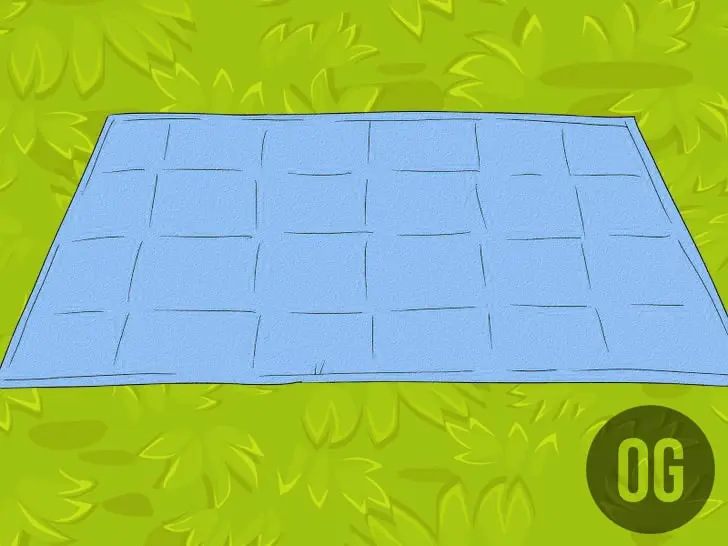
How to Use a Tent Footprint
Exploring the Importance of a Tent Footprint and purchasing the best tent footprint is not enough you have to know how to use a tent footprint.
Making use of a tent footprint is an easy and essential part of setting up your camping shelter.
Not only does it protect the floor of your tent, but also enhances your camping experience. Here is an effective approach on how to use one:
Select the Correct Location: Before choosing your campsite, take care to select an area free from rocks, sticks, and debris that could puncture your footprint or tent floor.
In addition, check for hazards like ant hills or potential water runoff paths which could create hazards to safety.
Clear The Area: Once you’ve selected your campsite, clear away any obstacles or debris in its immediate area – rocks, branches and any sharp objects that could damage your tent footprint will need to be cleared away before setting down your footprint.
Lay Down Your Footprint: Unfold and lay your tent footprint onto a clean campsite.
Be sure that it fits the shape and size of your tent’s floor, with any attachment points or grommets matching up perfectly with stakes or corners on its corners and stakes if applicable. (if custom fit)
Secure Footprint: Attach any footprint attachment points to the corners and stakes of your tent so they remain attached for optimal placement during setup or once inside. This step helps keep the footprint from shifting while in use or during setup.
Set Up Your Tent: Once your footprint is in place, begin setting up your tent directly atop it.
Follow the manufacturer’s instructions for assembly including inserting tent poles, attaching the rainfly, and staking down.
Make Any Adjustments Needed: As you set up your tent, double-check that its footprint remains properly positioned below it.
Adjust as necessary so that it fully covers its floor while also extending beyond its perimeter if possible for maximum moisture and debris protection. Once complete, stake down your tent.
Your tent’s stakes should be threaded through grommets or attachment points on both the tent and footprint, to secure it to the ground. In this step, tuck the excess footprint under.
Tuck Excess Footprint: If there is any excess footprint extending beyond the tent’s edges, tuck it neatly under the tent to prevent rainwater from collecting between it and the tent and maintain an attractive campsite.
Enjoy Your Campsite: Once your tent and footprint have been installed, you are ready to enjoy your campsite.
Relax, explore, and rest easy knowing that its floor is protected against moisture damage, abrasion, or other possible risks.
Break Down and Clean Up: As soon as it comes time to pack up and leave your campsite, follow the reverse process of setup.
First, remove your tent before folding up its footprint, and make sure it is clean and dry before storing it away – properly maintained footprints will last longer and provide more protection for your tent!
Alternatives to Tent Footprints
There always be the importance of a tent footprint, yet there may be other alternatives that serve the same or even better purposes for certain camping situations.
Here, we explore several alternatives to tent footprints as well as their respective benefits and drawbacks:
Ground Cloths/Tarps:
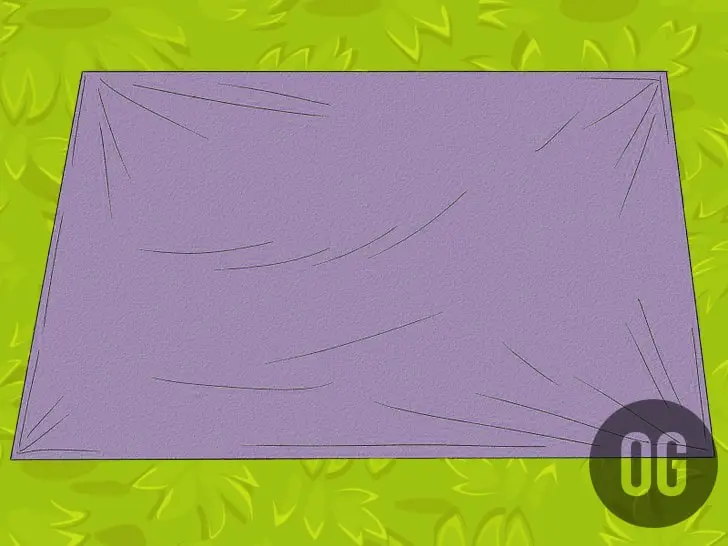
Pros: Ground cloths or tarps are versatile and widely available, making them a cost-effective alternative to tent footprints in terms of protecting from moisture, debris, and sharp objects on the ground.
Cons: Ground cloths may not fit perfectly to your tent and may need careful placement and trimming; without attachment points they could shift during setup and use, potentially allowing water to collect underneath them.
Tyvek Sheets:
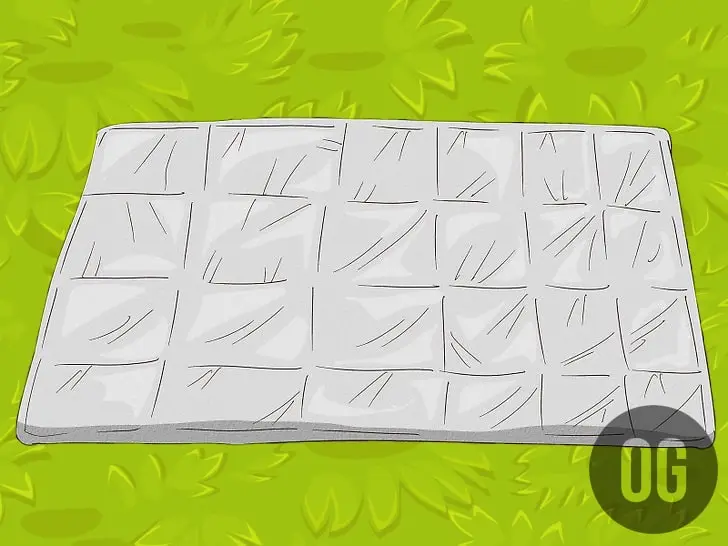
Pros: Tyvek is an ideal material to create DIY ground sheets from. It’s lightweight, tear-resistant, and provides great protection from moisture and abrasion – plus, you can cut it down to any size required by your tent!
Cons: Some campers find Tyvek ground sheets can crinkle loudly when walked on, potentially diminishing the experience. They may not be readily available as other options.
Polycryo Ground Sheets:
Pros: Polycryo ground sheets are lightweight, packable, transparent, and highly durable; making them an excellent way to reduce weight in ultralight backpacking situations. Ultralight backpackers frequently opt for them due to their weight-saving benefits.
Cons: Polycryo sheets may not be as puncture-resistant as other materials and require careful handling to avoid damage.
Tent Mats:
Pros: Some tent manufacturers provide custom-fit footprint alternatives designed to serve the same function, often custom-made specifically for your tent model and providing outstanding protection and convenience.
Cons: These alternatives may come at a higher cost than traditional ground cloths or tarps and be limited in availability due to specific tent brands.
No Ground Cover:
Pros: Experienced campers may opt to forgo ground covers when setting up their tent, which reduces weight and bulk in your camping gear – ideal for minimalist or ultralight backpacking trips.
Cons: Failing to provide your tent’s floor with ground cover increases its vulnerability against sharp objects or moisture damage, decreasing camping comfort and potentially restricting campsite selection.
DIY Alternatives:
Pros: Creative campers can craft their ground covers using materials like heavy-duty trash bags, used tents, leaves, or pine needles from nature to form their custom ground cover.
FAQs On the Importance Of a Tent Footprint
What Size Footprint Do I Need for My Tent?
Your footprint size should correspond with that of the floor of your tent or be slightly smaller to prevent water from pooling on its surface. Always refer to the specifications for accuracy in choosing this option.
How can I repair a damaged footprint?
To successfully restore damaged footprints, clean and dry the affected area thoroughly before using a waterproof sealant made specifically for that material to cover its damage securely. Be sure to read and follow product instructions when doing this step.
Are there eco-friendly footprint options?
Yes. Look for footprints made by eco-conscious organizations or those made of sustainable materials like recycled fabrics to minimize environmental impacts during production and disposal.
What are the pros and cons of tent footprint?
Tent Footprint Pros: Protects tent floor, extends tent life, easy to clean. Tent Footprint Cons: Adds weight, extra cost, and potential environmental impact if not disposed of responsibly.
Do all tents need footprints?
A tent footprint isn’t always necessary. Tents with thick floors (30-denier or more) may not need one, but terrain and conditions should still be considered.
How do you waterproof a tent footprint?
To waterproof a tent footprint, apply a silicone-based seam sealer or a waterproofing spray to the entire surface. Ensure thorough coverage and allow it to dry completely before use.
Conclusion
Here we conclude the importance of a tent footprint. Choosing the appropriate tent footprint is vital for protecting your tent, maximizing camping enjoyment, and reducing your environmental footprint.
By considering factors for the importance of a tent footprint like size, material, and terrain you can make an informed choice that ensures durability, comfort, and responsible camping practices.
What do you feel about our article on the importance of a tent footprint? Let us know by commenting below in the comment section.


